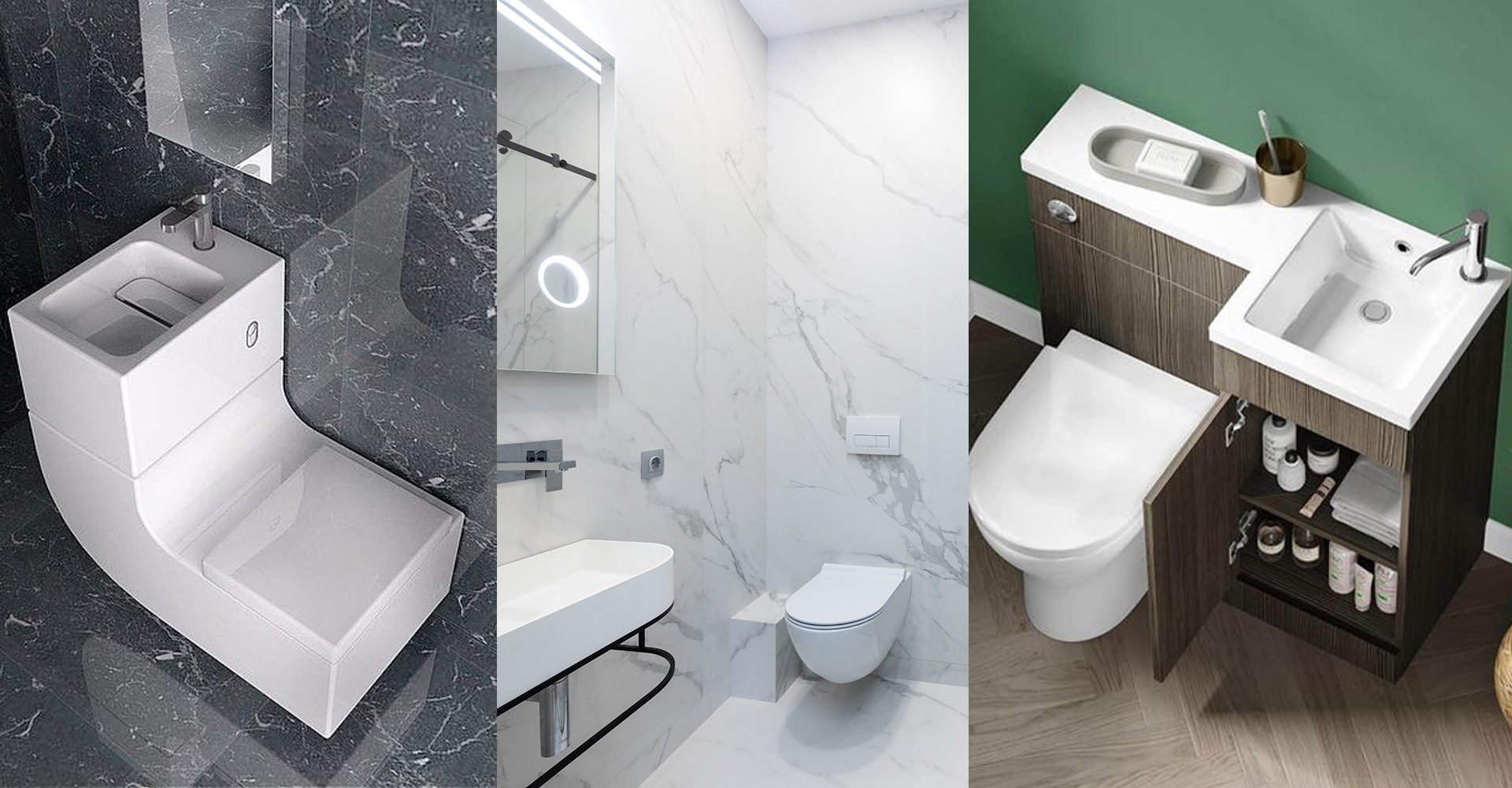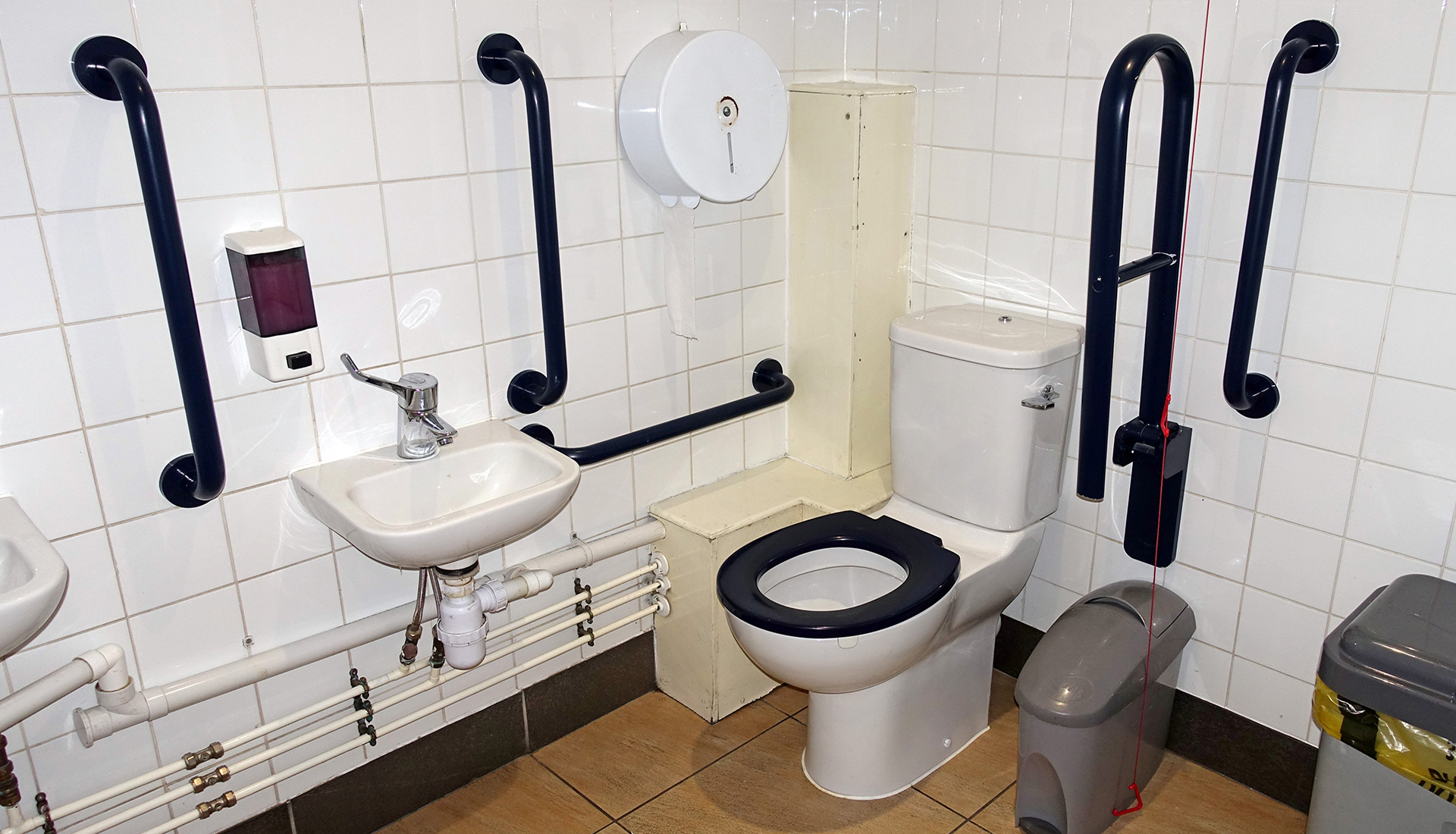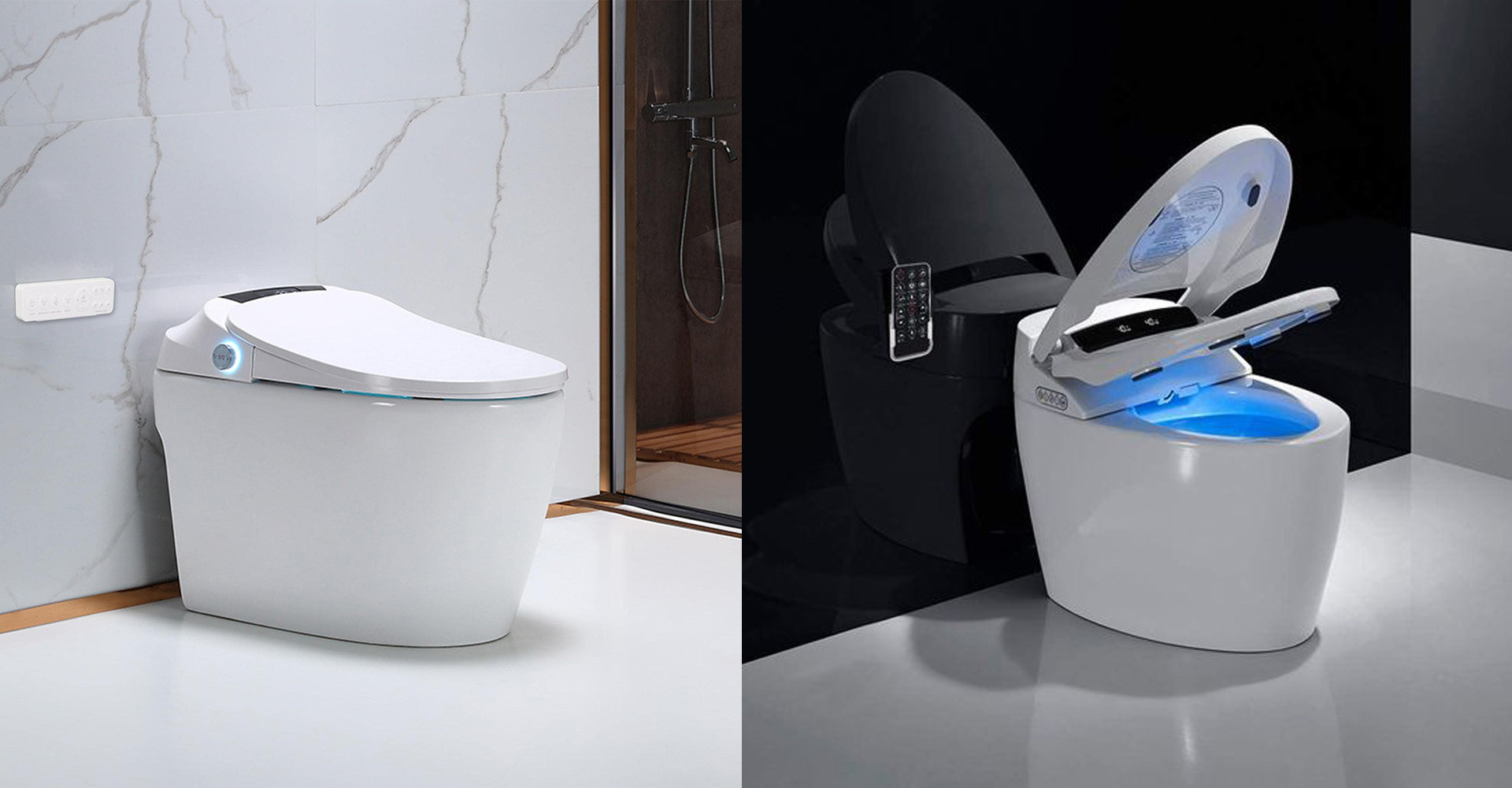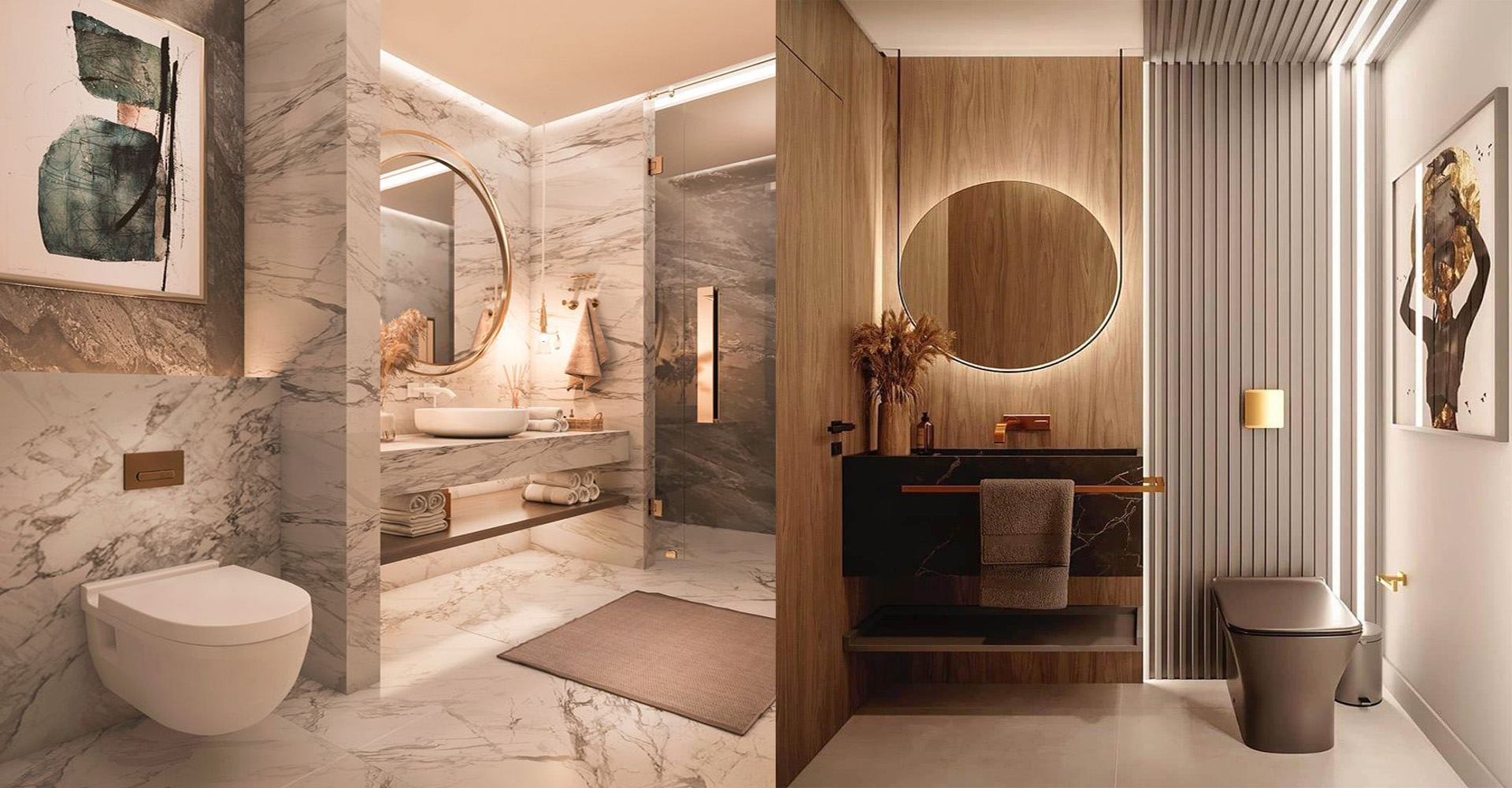Functional toilets prioritize practicality and efficiency while ensuring basic comfort and hygiene.
Functional Toilets

Here are some features commonly found in functional toilets :
- 1. Efficient Flush System : Functional toilets are designed with efficient flush systems that effectively remove waste using minimal water. This helps conserve water while maintaining proper sanitation. Examples include dual-flush toilets, pressure-assisted toilets, or gravity-fed toilets with optimized flush mechanisms.
- 2. Easy-to-Clean Surfaces : Functional toilets feature smooth surfaces and materials that are easy to clean and maintain. They are designed to resist staining, bacteria growth, and odor buildup. Rimless or rim-free toilet bowls, for instance, have a streamlined design that eliminates the hard-to-reach areas where dirt and bacteria can accumulate.
- 3. Standard Height and Comfort : Functional toilets are typically designed with a standard height that suits the majority of users. This ensures comfort and ease of use for individuals of different ages and abilities.
- 4. Durable Materials : Functional toilets are made from durable materials that can withstand regular use and resist wear and tear. Common materials include ceramic or vitreous china, which are both sturdy and easy to clean.
- 5. Adequate Seat Size and Stability : Functional toilets have seats that are appropriately sized and provide stability during use. They are designed to accommodate different body sizes and shapes, ensuring comfort and safety.
- 6. Proper Ventilation : Functional toilets are equipped with proper ventilation systems, such as exhaust fans or windows, to remove odors and prevent the accumulation of moisture and mold.
- 7. Accessibility Considerations : Functional toilets may incorporate accessibility features to cater to individuals with disabilities or limited mobility. These features can include grab bars, raised toilet seats, and sufficient space for maneuvering wheelchairs or mobility aids.
- 8. Water Efficiency : Functional toilets often prioritize water efficiency by incorporating features such as low-flow flush mechanisms or dual-flush options. These designs aim to reduce water consumption without compromising the effectiveness of waste removal.
- 9. Cost-Effectiveness : Functional toilets are designed with practicality in mind, providing reliable performance at an affordable price point. They prioritize essential functions and durability without excessive frills or luxury features.
- 10. Compliance with Standards and Codes : Functional toilets meet relevant building codes, regulations, and standards to ensure safety, hygiene, and accessibility.
Functional toilets focus on providing reliable performance, ease of maintenance, and user-friendly features without compromising on basic comfort and hygiene. They are designed to meet the essential requirements of a toilet while considering efficiency, durability, and accessibility.
Disabled Friendly Toilets

Here are some key features commonly found in disabled-friendly toilets :
- 1. Spacious Layout : Disabled-friendly toilets have ample space to accommodate individuals using mobility aids, such as wheelchairs or walkers. The layout ensures easy maneuverability within the space, with enough room for turning and transferring from a wheelchair to the toilet.
- 2. Accessible Entrances : The entrance to a disabled-friendly toilet should be wide enough to accommodate wheelchair users. It should have level access without steps or obstacles, allowing easy entry and exit.
- 3. Grab Bars and Handrails : Disabled-friendly toilets incorporate sturdy grab bars and handrails strategically placed around the toilet area. These bars provide support and stability for individuals with mobility difficulties to transfer to and from the toilet safely.
- 4. Raised Toilet Seats : Some disabled-friendly toilets feature raised toilet seats or toilet seat height adjustability. These adaptations make it easier for individuals with mobility limitations to transfer onto and off of the toilet.
- 5. Adequate Clear Floor Space : Disabled-friendly toilets allocate sufficient clear floor space around the toilet to accommodate wheelchair users. This space allows individuals to position themselves appropriately for transferring and using the toilet comfortably.
- 6. Emergency Alarm Systems : In case of emergencies or assistance needs, disabled-friendly toilets may include emergency alarm systems. These systems allow individuals to call for help or alert others if they require assistance.
- 7. Supportive Equipment : Depending on the needs of the users, disabled-friendly toilets may include supportive equipment such as mobile shower chairs, adult-sized changing tables, or hoists to assist individuals with mobility difficulties.
- 8. Visual and Tactile Signage : Disabled-friendly toilets often have clear and visible signage with contrasting colors and easy-to-read symbols. Braille signage can also be provided for individuals with visual impairments.
- 9. Proper Lighting : Good lighting is essential in disabled-friendly toilets. Adequate lighting ensures visibility, particularly for individuals with visual impairments, and helps prevent accidents or falls.
- 10. Accessible Wash Basins : Disabled-friendly toilets may include accessible wash basins with lower heights, lever or touchless faucet controls, and adequate knee clearance for wheelchair users.
Modern Toilet

Here are some characteristics commonly associated with modern toilets :
- 1. Sleek and Minimalist Design : Modern toilets feature clean lines, smooth surfaces, and minimalist aesthetics. They often have a streamlined and compact appearance, creating a visually appealing look in the bathroom.
- 2. Wall-Mounted or Floating Design : Wall-mounted toilets, where the toilet bowl is mounted directly to the wall, are popular in modern designs. This style creates an open and spacious feel in the bathroom while also making cleaning easier.
- 3. Hidden Tanks and Concealed Cisterns : Modern toilets often conceal the tank or cistern behind the wall or within a concealed unit, creating a sleek and seamless look. This design choice saves space and contributes to a clutter-free bathroom environment.
- 4. Soft-Close Mechanism : Many modern toilets incorporate a soft-close mechanism for the toilet seat and lid. This feature allows for quiet and gentle closing, eliminating the possibility of slamming and reducing wear and tear.
- 5. Touchless Flush or Sensor-Activated Controls : Modern toilets may feature touchless flush mechanisms or sensor-activated controls, reducing the need for physical contact and promoting hygiene. These systems typically use motion sensors to automatically trigger the flush.
- 6. Water-Saving Features : Many modern toilets prioritize water efficiency by incorporating water-saving features. This can include dual-flush mechanisms, which offer a choice between a full flush for solid waste and a reduced flush for liquid waste, or low-flow flush systems that use less water per flush.
- 7. Comfort Features : Modern toilets often focus on providing enhanced comfort. This can include features like heated seats, adjustable water temperature and pressure for bidet functions, and even built-in air dryers.
- 8. Eco-Friendly Materials : Sustainable and eco-friendly materials are commonly used in modern toilet designs. This can include materials with low environmental impact, such as recycled or recyclable components.
- 9. Smart Toilet Technology : Some modern toilets are equipped with smart technology, allowing for advanced features and connectivity. This can include features like automatic seat opening and closing, personalized user settings, integrated bidet functions, and even Wi-Fi connectivity for remote control and monitoring.
- 10. LED Lighting : LED lighting is often incorporated into modern toilet designs to create a soft and ambient glow. This can serve as a nightlight feature or simply add a modern touch to the overall aesthetics.
Modern toilets combine contemporary design principles, technological advancements, and eco-friendly considerations to create functional, stylish, and efficient bathroom fixtures. These features enhance both the visual appeal and user experience in the modern bathroom.
Luxury Toilet

Here are some features commonly found in luxury toilets :
- 1. Bidet Functionality : Luxury toilets often come equipped with bidet features, such as integrated bidet wands or spray nozzles. These allow for thorough cleaning and personal hygiene, eliminating the need for toilet paper.
- 2. Heated Seats : Luxury toilets often have heated seats to provide warmth and comfort, particularly in colder climates. The seat temperature can typically be adjusted to suit individual preferences.
- 3. Automated Functions : High-end toilets may include automatic functions such as automatic lid opening and closing, seat sensors that trigger when someone approaches, and hands-free flushing mechanisms. These features add convenience and a touch of sophistication to the toilet experience.
- 4. Adjustable Water Pressure and Temperature : Luxury toilets often offer customizable water pressure and temperature settings for bidet functions. Users can adjust the water flow and temperature to their liking for optimal comfort.
- 5. Air Dryer : Some luxury toilets include built-in air dryers that eliminate the need for toilet paper. These dryers use warm air to gently dry the user after bidet cleansing.
- 6. Deodorizing Systems : Luxury toilets often feature built-in deodorizing systems that help neutralize unpleasant odors. These systems use activated carbon filters or other technologies to eliminate or reduce odor.
- 7. Soft-Close Lid and Seat : To prevent slamming, luxury toilets often have soft-close lids and seats that lower gently and quietly when released.
- 8. LED Lighting : Some luxury toilets come with LED lighting features that provide soft illumination in the bathroom. These lights can serve as a nightlight or create a soothing ambiance.
- 9. Touchless Controls : High-end toilets may feature touchless controls for flushing and other functions. These touchless systems use sensors to detect user movement or hand gestures, promoting hygiene and reducing the spread of germs.
- 10. Customizable Settings : Luxury toilets often offer customizable settings, allowing users to personalize their experience. These settings may include water temperature, water pressure, seat temperature, and other preferences.
Luxury toilets cater to those who appreciate a high level of comfort, convenience, and advanced features in their bathroom experience. They combine functionality with elegant design to create a truly luxurious and pampering toilet environment.
Precautions While Designing a Toilet
Here are some key precautions to keep in mind :
- 1. Adequate space : Ensure that there is enough space in the bathroom to accommodate the toilet comfortably. Allow for proper clearance around the toilet bowl & consider the needs of users with mobility aids.
- 2. Accessibility : Design the toilet with accessibility in mind. Incorporate features such as grab bars, raised toilet seats, and wider doorways to accommodate individuals with disabilities or limited mobility.
- 3. Proper ventilation : Install proper ventilation systems, such as exhaust fans or windows, to eliminate odors and prevent the buildup of moisture and mold.
- 4. Privacy : Provide sufficient privacy by positioning the toilet away from direct lines of sight and ensuring the installation of doors or partitions that can be securely closed.
- 5. Lighting : Incorporate adequate lighting to ensure visibility in and around the toilet area. This is particularly important for users with visual impairments or for nighttime use.
- 6. Non-slip flooring : Use non-slip flooring materials to minimize the risk of falls and ensure safety, especially in areas prone to moisture like the toilet area.
- 7. Hygiene considerations : Design the toilet with easy-to-clean surfaces and materials that are resistant to staining, bacteria, and odors. Include features like hands-free flush mechanisms, touchless faucets, and automatic soap dispensers to promote hygiene.
- 8. Water efficiency : Consider incorporating water-saving features, such as dual-flush toilets or low-flow flush mechanisms, to conserve water while maintaining proper sanitation.
- 9. Accessibility for cleaning : Ensure that the toilet design allows for easy access to clean all areas effectively, including behind the toilet, under the rim, and around the base.
- 10. Universal design : Consider implementing universal design principles that cater to a wide range of users, regardless of age or ability. This promotes inclusivity and ensures that the toilet is usable by everyone.
It's important to consult with professionals such as architects, interior designers, or accessibility experts to ensure that your toilet design meets all relevant building codes, regulations, and standards in your area.

